Clematis Andromeda - rules of care and cultivation
The royal flower of Clematis Andromeda is part of the Patens group - plants that are distinguished by large stems, inflorescences and bright colors. Consider the main description of the variety, the rules for planting, care and breeding methods.
- Description of the plant
- Landing features
- Site preparation
- Preparation of planting material
- Landing technique
- Care
- Watering
- Mulching and loosening
- Top dressing
- Pruning
- Preparing for winter
- Reproduction methods
- Cuttings
- Stem layering
- By dividing the bush
- Diseases and pests
- Alternaria
- Gray rot
- Powdery mildew
- Rust
- Wither (Wilt)
- Septoria
- Aphid
- Spider mite
- Nematode
- Application in garden design
- Testimonials
- Useful videos
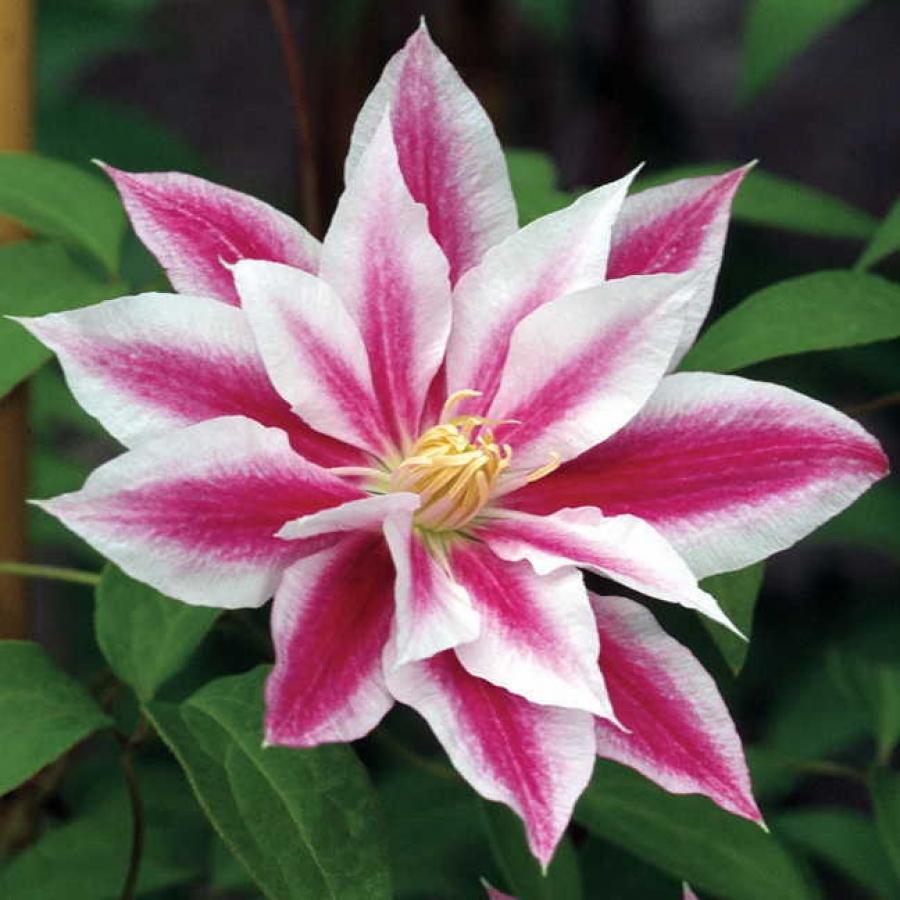
Clematis andromeda
Description of the plant
The botanical name is clematis andromeda.
A two-colored early flowering plant at maturity reaches 4 m in height. Shoots are massive, hard, curly.
The flowers are large, 15 cm in size, consist of elongated petals pointed at the tips. The sepals are two-colored - the main tone is snow-white, in the center there is a wide purple or burgundy stripe, the core is a rich yellow hue.
Leaves are green, oval, sharp, smooth closer to the tip. The root system is well-branched and superficial.
Flowering takes place in two stages - in spring and summer, it forms semi-double flowers, in autumn, single. In the budding phase, the shoots growing to the top are densely covered with bright inflorescences, which fall in a cascade, creating a bright and colorful cover.
Landing features
The seedlings are planted in the spring, when the last frosts have passed and the soil warms up to 10-12 ° C.
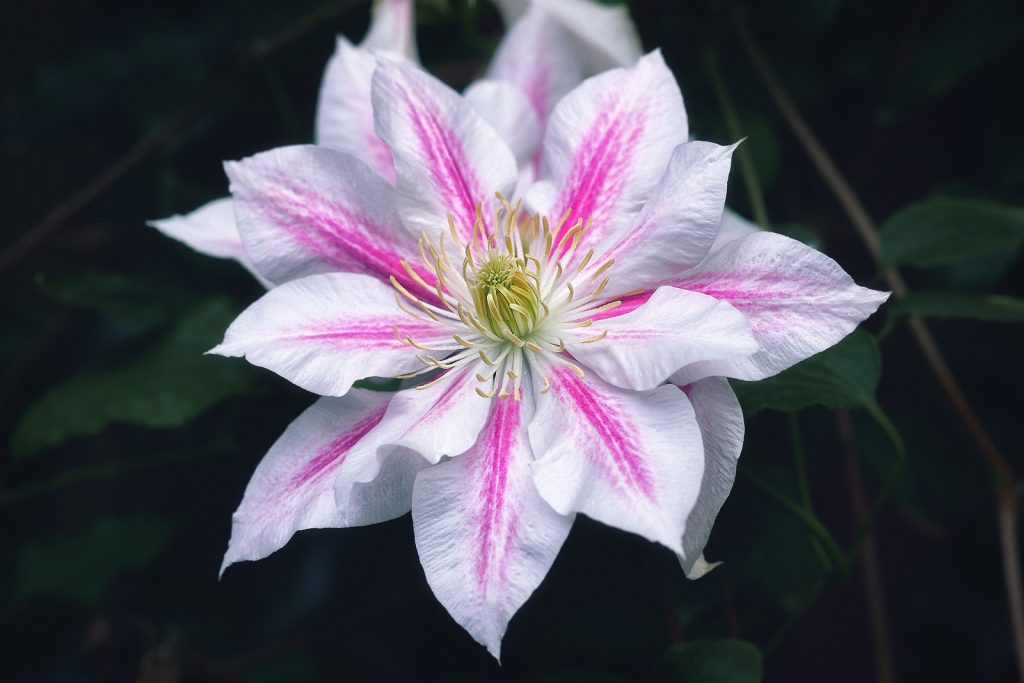
Andromeda clematis
In regions with a warm climate, they are planted in early autumn - in the first half of September. So the bushes have time to take root and prepare for the upcoming winter.
Site preparation
This plant loves a lot of light. It can also grow in a slight shade, the main thing is that in the morning and evening hours it is illuminated by the sun's rays.
Choose a windless area without moisture stagnation, otherwise clematis will quickly dry out or rot. It is not worth planting under the walls of houses, outbuildings, where rainwater flowing from the roofs will cause rotting and death of the crown.
It grows well on light, loose soil with a high content of organic and mineral components. When planting on sandy loam, you will need to add a couple of buckets of clay, on loam add sand or vermiculite - 20 kg per 1 m².
Acidity indicators should be in the range of 6-7 units. If it exceeds the norm, the place for planting is sprinkled with 350 g of dolomite flour, slaked lime or calcite per 1 m².
After adding the necessary components, deep digging, leveling and watering are carried out.
Preparation of planting material
You can buy seedlings in one of the specialized nurseries. Usually they are sold in containers to protect the roots from drying out.
Choose mature bushes that have several stems, densely covered with foliage. Such plants already have a well-developed root system, which means they will successfully take root after transplanting into open ground.
Pay attention to the crown - shoots, leaves and buds of healthy seedlings do not contain mechanical injuries, signs of disease and parasites.
Before planting, clematis is saturated with moisture - soaked in water for three hours, the roots are slightly trimmed (by 2-3 cm) in order to stimulate further growth of new processes.
Landing technique
Two weeks before planting, holes are dug twice the size of the roots. The approximate dimensions are 40x50x60 cm. First, drainage is laid in order to improve the outflow of excess moisture. Use pebbles, rubble or brick chips.
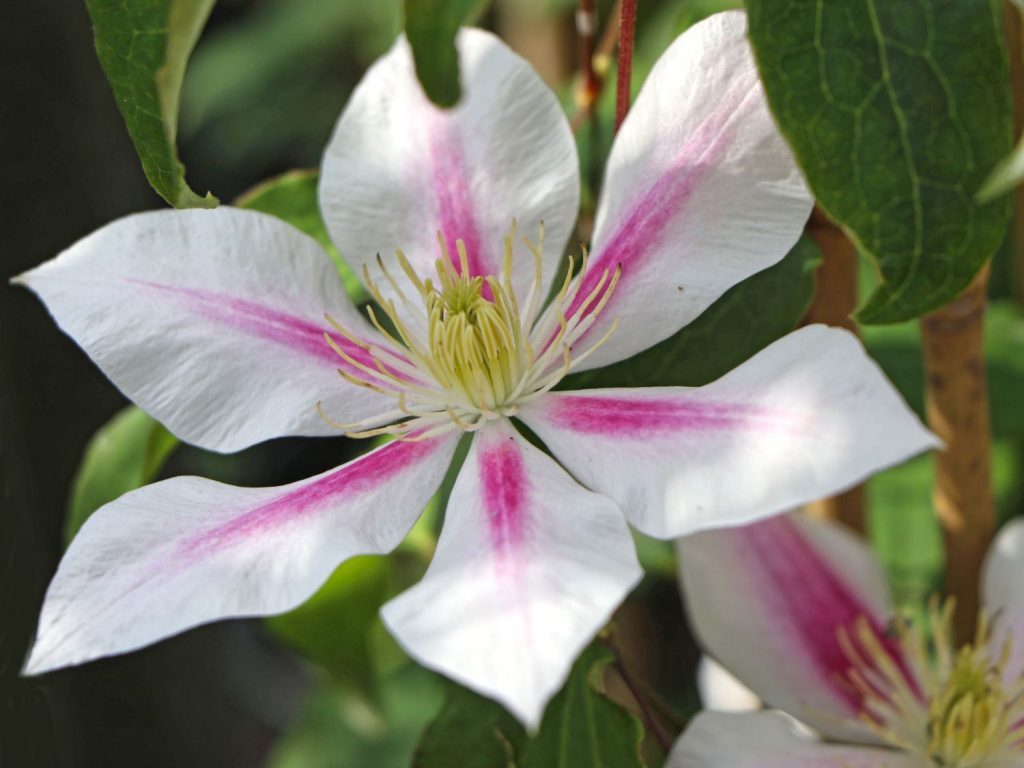
Clematis andromeda photo and description
Sprinkle on top with nutritious soil mixture from a mixture of humus, dug earth and compost, mixed in equal amounts. To increase fertility, 30 g of wood ash, 100 g of superphosphate and 300 g of dolomite flour are added to this composition.
The roots of the plant are lowered, straightened, covered with the remaining soil to the top so that the root collar is 12 cm underground. They are tamped, moistened, mulched with peat or last year's manure.
When growing in groups, it is necessary to maintain a distance of at least 70 cm.
Care
Watering
In the first month of development, the seedlings are watered every day - a bucket of water is poured under the bush. Moisture will help them take root and grow faster.
In the future, moisturize often and abundantly:
- In spring and summer, when there is no precipitation, every three days.
- In autumn, the need for moisture is determined by the condition of the soil - if it has dried out to a depth of 5-6 cm, it's time to moisten.
The culture responds positively to periodic sprinkling of the crown in the evening hours. This procedure increases decorativeness, stimulates the growth of new stems, leaves and prevents the appearance of parasites.
Mulching and loosening
After each watering, the soil is loosened so that it retains moisture and air permeability. They also periodically weed between rows, pull out weeds, which are an excellent medium for the appearance of pests and diseases.
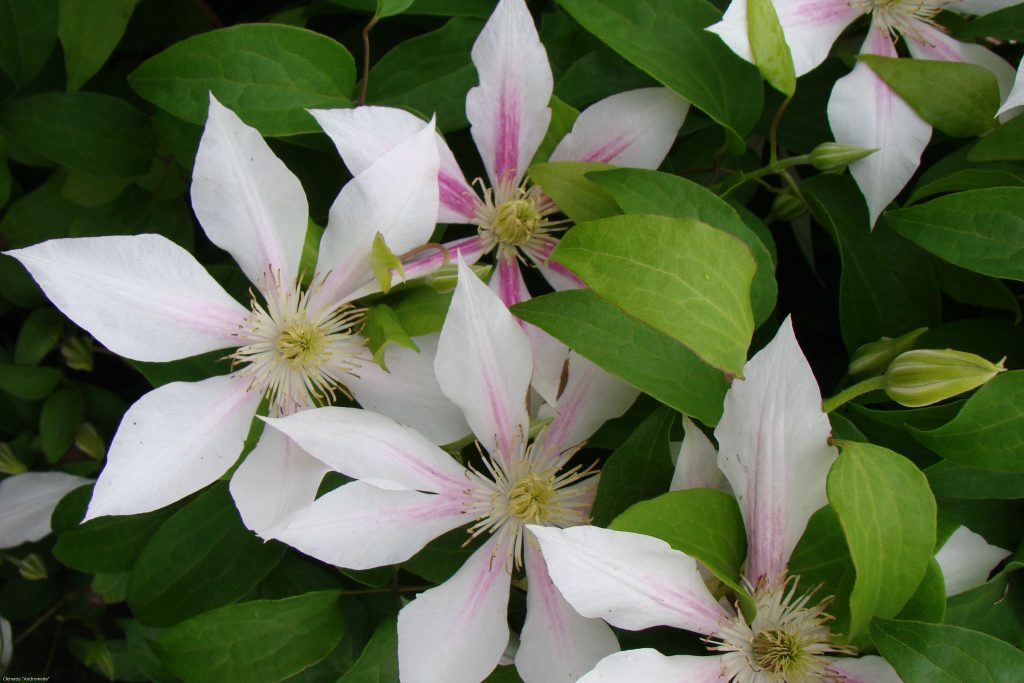
Clematis andromeda trimming group
At the very end, they introduce mulch from peat or humus - it protects the roots from drying out, prevents the growth of unnecessary vegetation.
Top dressing
Clematis needs a balanced and regular diet for full growth and long flowering.
The first time feeding is applied in the third year of development. Scheme (quantity is calculated for 10 liters of water):
- in early spring, before the swelling of vegetative buds, watered with urea - 10 g;
- at the beginning of summer, a solution of 50 g of ammonium nitrate is poured under each bush;
- then, before the onset of autumn, they feed it with a liquid mullein (1:10) or with a ready-made store-bought preparation Kemira plus with an interval of two weeks;
- when the liana fades, they are fed with superphosphate with potassium - 15 g each;
- in the fall, after leaf fall, they are spilled with a solution of wood ash - 1 kg (consumption per bush - 0.5 l).
It is advisable to combine root nutrition with watering. This will improve the quality of assimilation of nutrients and prevent them from burning.
Pruning
This procedure is carried out every shade - all branches are cut to a height of about 1.5 m, leaving from 10 to 15 knots. In winter, no more than 10 strong branches should go, weak and thin ones are cut on a stump. With this selection, bloom next year will be lush and abundant.
Also, in the spring, a sanitary haircut is necessary - they remove frozen, shriveled, broken off and damaged stems by diseases, parasites.
In the summer, when the plant is actively increasing its young growth, shoots that grow in the wrong direction or thicken the crown can be cut into a ring.
All manipulations are carried out using a sharp and sterile secateurs. The cut sites are irrigated with copper sulfate, which helps to avoid infection.
Preparing for winter
Almost all varieties of clematis are considered frost-resistant, but at an early age they need insulation. All work is carried out until the onset of severe frosts (-4-6 ° C).
After the autumn pruning, when the weak and non-viable parts are removed, the near-trunk zone is mulched with peat or humus (15 cm in height).
The branches are neatly tied, bent to the ground, and fixed with staples. From above, the bush is covered with hay, straw or fallen leaves. To prevent the shelter from being blown away by the wind, slate or spruce branches are laid on top.
With the arrival of spring, when the snow thaws and the last frosts pass, the insulation material is removed, the branches are untied and straightened.
Reproduction methods
Gardeners use several methods of propagation of this culture, subject to the rules of material preparation, planting and care, your work will be justified.
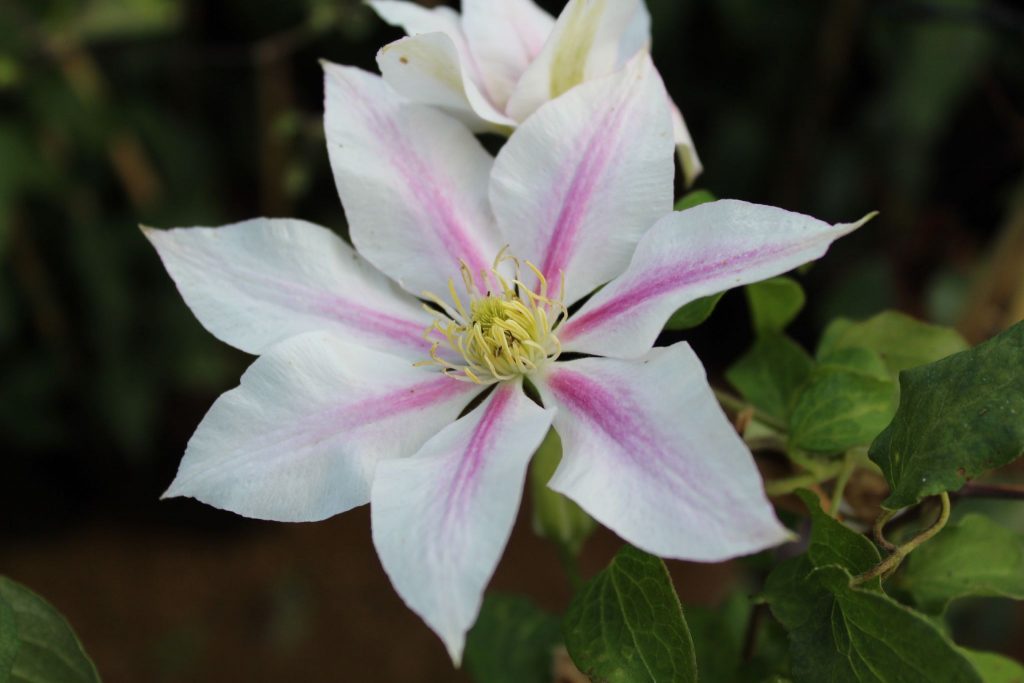
Clematis andromeda reviews
Cuttings
Cuttings are harvested in spring or summer during pruning. The apical parts with several internodes, leaflets and buds are used. The optimal shoot length is 12-15 cm.
All the leaves are removed from the bottom, then dipped in one of the growth stimulants for an hour. This will help the twigs take root faster. They are planted in a loose and light mixture of humus, sand and peat, mixed in equal amounts. The seeding depth of cuttings is 3-4 cm.
The plantings are moistened, covered with a transparent material, placed in a warm place with diffused daylight.
Air every day so that mold does not form, watered as the substrate dries. After about 2-3 weeks, they will take root. You can determine this by the new leaves. Then the shelter is removed, they grow for another month so that the seedlings are overgrown with roots. Then they are planted in the open field in the same way as purchased plants.
Stem layering
On an adult liana, the most flexible lignified shoot is chosen, which is close to the ground. Remove all the leaves on it. They are lowered in a horizontal position into a dug groove to a depth of 5-6 cm. They are covered with a nutrient composition, as when planting cuttings.
On the eve of autumn frosts, sprinkle with fallen leaves, sawdust or compost.
In the spring, when the snow melts, the above zero temperature stabilizes, the twig is removed from the ground, cut off from the mother bush. Divide into parts so that each has roots. They are seated separately in a permanent habitat in a garden or flower garden.
By dividing the bush
Usually this breeding method is used for old vines that have stopped growing, do not bloom well and need rejuvenation.
The breeding technique is as follows:
- clematis is watered abundantly, after an hour it is removed from the soil;
- wash off the remnants of the soil, dry;
- divide the root system with a garden shovel into parts, so that each has one stem and several roots;
- places of cuts are sprayed with a solution of copper sulfate, dried, planted in a garden or flower garden.
Further care of seedlings is the same as for adult plants.
Diseases and pests
Clematis Andromeda rarely becomes infected with infections and pests, only weakened shrubs that grow without proper care and attention are prone to this.

Clematis andromeda
Alternaria
This disease appears in late summer or early autumn. Signs - necrosis of leaves and stems. Usually, the infection damages the old parts, but with a strong mass spread, it spreads to young shoots and foliage. If left untreated, the plant will dry out in a short time.
In the fight against this sore, copper-containing preparations are used - Bordeaux liquid or copper sulfate.
Gray rot
Appears in wet and rainy weather, especially if the bushes are too densely planted.
Leaves and shoots are covered with brown spots, which grow rapidly. A grayish fluffy bloom forms on top.
All damaged areas are cut off. The crown is irrigated with Fundazol or Azocene solution.
Powdery mildew
You can determine this fungal disease by a whitish coating on the surface of all organs. As a result, the plant stops growing, blooms poorly and gradually withers away.
First, the infected tissues are removed, then the crown is treated with a copper-soap solution - 250 g of household soap are mixed with 25 g of copper sulfate and 10 liters of water.
Rust
Light brown or red growths on the surface of the stems, leaves are a sure sign of this infection. Over time, the infected areas turn brown and dry out.
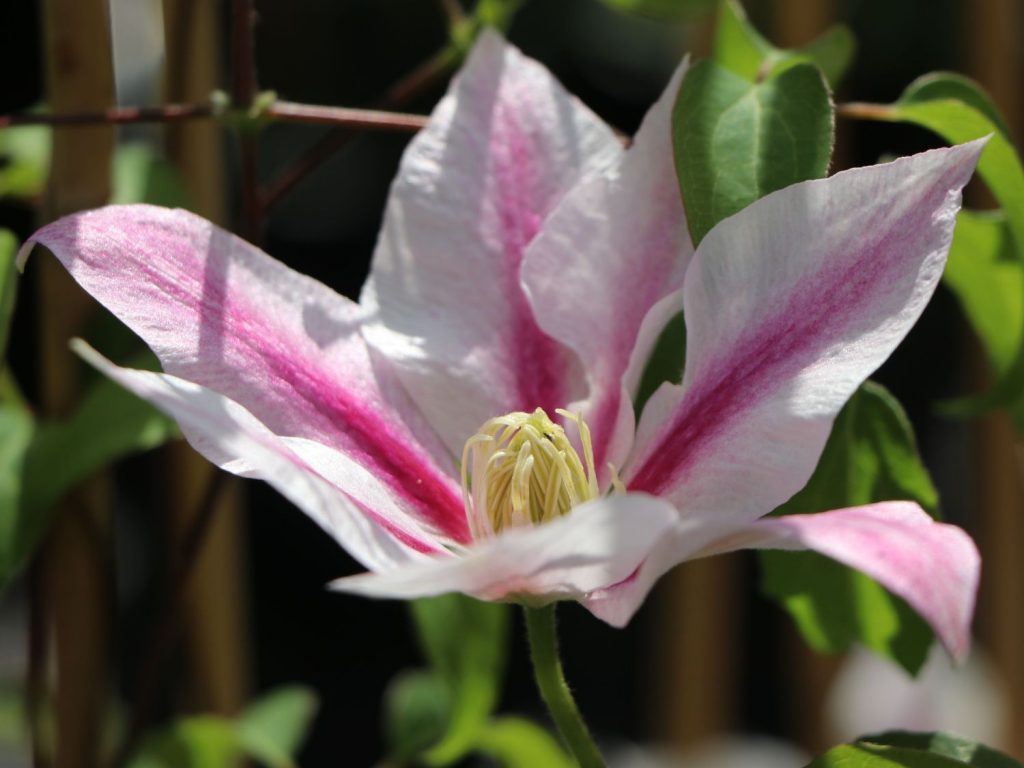
Clematis andromeda description
The treatment is carried out in two stages - the diseased parts are cut off, then the crown is irrigated with fungicides - Bordeaux liquid or copper sulfate.
Wither (Wilt)
The fungus parasitizes the shoots, leading to the loss of their turgor. The stems wither and dry quickly and the plant dies in a short time.
The bush is treated with a solution of Fundazole 0.2% concentration.
Septoria
With this disease, gray spots with red edging appear on the leaves of clematis. The affected tissues die off quickly, the plant dies.
To destroy the infection, drugs containing copper are used - Bordeaux liquid or copper sulfate.
Aphid
This parasite settles in colonies on the underside of clematis leaves. It multiplies quickly and in a short time can lead to the death of a shrub.
It feeds on the juice of leaves, buds and young growth. The affected parts curl, dry and fall off.
In the fight against insects, Karbofos, Fitoverm or Aktara are used.
Spider mite
This pest appears in extreme heat and drought. Braids with a small cobweb the lower side of the leaves, internodes. Likes to feast on the juice of leaves, buds. The damaged parts are covered with a marble pattern, wrinkled and dry.
Acaricides - Actellik or Aktara will help to destroy the tick.
Nematode
Young foliage and buds are affected, as a result of which they acquire a brown tint and dry out.
You can get rid of this pest with the help of insecticides - Karbofos, Fitoverma or Karate.
To support immunity and protect against infection with infections, parasites, several preventive rules must be observed:
- buy only healthy planting material;
- maintain cleanliness in the flower garden - remove weeds, plant residues in time, weed and loosen the ground;
- timely cut out non-viable parts on the crown;
- systematically water, feed the liana;
- avoid thickening of plantings.
Application in garden design
In a modern landscape, bright and attractive clematis is of great value:
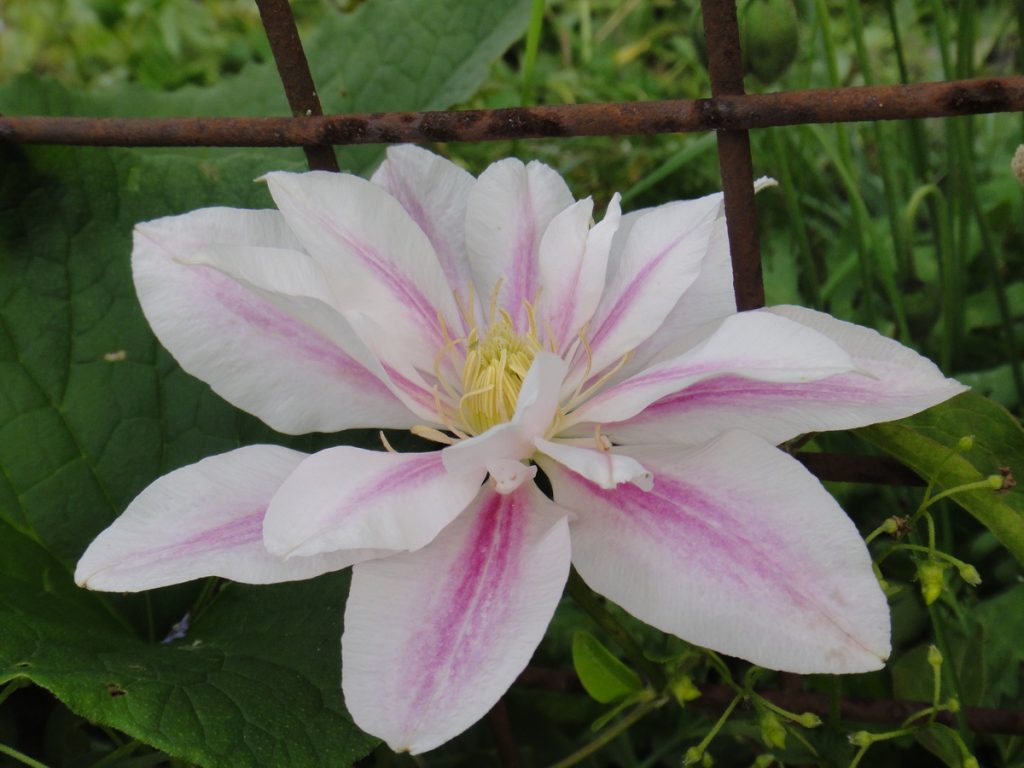
Clematis andromeda photo
- it is planted singly near arches, gazebos, terraces, fences;
- combined with other varieties with white, purple and blue inflorescences, this creates a very beautiful multi-colored hedge;
- often liana is framed with low-growing plants - hosta, marigolds, calendula, etc.
Testimonials
Gardeners have this perennial vine in good standing and received many positive reviews:
- many appreciate Clematis Andromeda for its good frost resistance, therefore it is grown in different regions of the country;
- others like that it grows quickly, blooms magnificently, creating a bright and thick blanket of numerous inflorescences;
- a great advantage of the variety is the ability to successfully reproduce in different parts, which makes it possible to grow your own bushes on the site.

